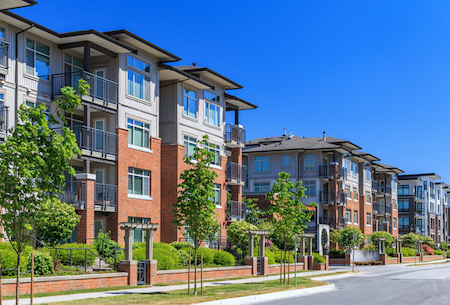Lately, the term “master-planned community” has been making headlines in Canadian real estate and development. Essentially, this is a large-scale type of development that incorporates not just condo towers or homes, but retail, restaurants, community resources and infrastructure into a single site. The idea is to provide everything someone needs to live, work and play all within walking or cycling distance.
There’s no official criteria for the size or scope of these developments, so they can be as large as 72 acres on a former industrial site, or as small as just two or three condominium towers centered around a common space. Even in cities where development space is at a premium, these types of projects are increasing in popularity. Here’s why:
Everything is new. It’s no secret that anything new has a unique sense of appeal. In a master-planned community, you’re not just purchasing a brand-new condominium suite—a perk in itself—but you’re getting access to new infrastructure, as well. This can include things like a community centre, park land, recreation facilities, even new streets and transit routes. Buyers are drawn to this for obvious reasons, not to mention the shared camaraderie that comes when settling into a new environment.
They build a strong sense of community. When you spend time in the same neighbourhood, you get the chance to build a stronger network with the people you interact with. Today’s urban dwellers appreciate not just the convenience of these developments, but the strong sense of community. It makes it much easier to meet and socialize with neighbours, as well as those who work or spend time in the area. The convenience of having a walkable community like this also means that you have more time to spend doing things you love, whether that’s being social, learning or enjoying the outdoors.
Less guesswork for investors. Investors—or anyone looking to make a profit on their unit—put a lot of stock into the future of a neighbourhood. They want to know what kind of infrastructure is planned for the area, whether schools or office buildings might be built nearby and other development plans that could cause property values to go up or down. Because a master-planned community is usually built in phases, someone buying in a phase 1 tower will have a pretty good idea of what the area will look like in five or 10 years. Certainly, plans can change over time, but for the most part this is a unique opportunity to get a glimpse into the future of an immediate area.









